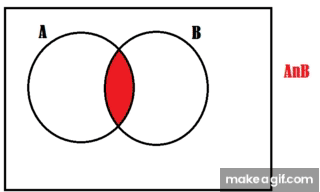A First Look Into It
You alway relate items in a 'set', whether you know it or not. For instance, when you talk of clothes, and you refer to trousers as a whole, you may now talk of jeans or tights. If you talk of jeans as a whole, you may now talk of Dolce and Gabana or Tress Pass or any kind of designer. So you choose sets to discuss with.
Its the same if you mention peoples or cars or whatever. When you have gathered a set, you now talk of similarities and differences and also what-nots and what-is and even what will never belong there. Sets are applied in math, especially in probabilities and combinatorics.
A Univoise
A 'Universal Set' is the set of all possible items you may mean. For instance, if I say 'cars', I mean all types of for-tyred small vehicles with a bonnet and an engine. I, in this case, exclude all lorries and motorcycles because the are not cars. But if I said "all Volvos", then I am talking about a certain brand regardless of age, location, make, shape or color. But if I said "all red 1984 Volvos" then you could relate with that. I may now within that universal set, state differences and similarities. Here is an example of three sets consisting of a universal set and two others:
- U = All People in the Americas
- A = People in US
- B = People from Brazil
You will agree that 'People from Brazil" are not all contained inside the US, and also "People from Brazil who live in Germany" are not being considered here. But you will also agree that "People in US" contains some "People from Brazil" apart from other "People in US".
How it Looks
The members of a Set are called elements. Sets are represented in several ways:
- In words
- Using a mathematical statement
- Using a vein diagram
For lessons in graphs and vectors look at: |General Graphing Vectors
In words
You could put a set this way:
A={All people with red hair and come from Europe}
B={Numbers less than ten but greater than 4}
That doesn't seem hard to understand. You can tell the second set is listing 5 to 9 for you. You can use these info in a computer for instance just like that.
Using a mathematical statement
You could put a set this way:
A={y: y is a whole number, y <100 }
B={x: 100< x <300}
You will find that A includes all numbers that are less than 100 starting a countdown from 99 while x are all numbers less than 300 but greater than 100. x are real numbers.
Vein Diagrams
A vein diagram is a drawing using intersecting circles to mathematically represent a set. Where two circles intersect there are similarities. There can't be more than three circles because it would be odd to draw such. Below is an example:
The red region represents an intersection between set A and B. You could reasonably say A is equal to 'red region plus yellow region'.
Intersections And Unions
Intersections
Similarities between two sets are called intersections. Say for instance,
A={y: y is a whole number, y <1000 }
B={x: 100< x <300}
AnB = {z: z is a whole number, 1000> z >299 }
C={2,4,6,8,90,100,7,5}
D={5,4,8,6,100,2,11,60,53}
CnD={2,4,5,6,8,100}
The intersection between A and B can be called another set G. Intersections contain only what can be found in both sets and it is a set on its own. I'm sure you can tell what the intersection is between man-body-members and woman-body-members quickly.
Union
A union of two or more sets are all elements that can be found in both of them. You must call each element once even if they appear more than once. for example:
A={y: y is a whole number, y <1000 }
B={x: 100< x <300}
AuB = {z: z is a real number, 300> z >100 and z is a whole number , 1000< z < 300 }
C={2,4,6,8,90,100,7,5}
D={5,4,8,6,100,2,11,60,53}
CuD={2,4,5,6,7,8,11,53,60,90,100}
The union between A and B can be called another set G. Unions contain only what can be found in both sets and it is a set on its own. I'm sure you can tell what the union is between man-body-members and woman-body-members quickly.
All The Complements
A complement of a set is what is contained in the universal set but not in the considered set. For example:
U is the Universal set, U = {x: 0< x <101}
A={x: 20 < x < 100}
A'= {1-19, 100}
C={2,4,6,8,90,100,7,5}
C' ={1,3,9,10-89,91-99}
CuD={2,4,5,6,7,8,11,53,60,90,100}
You can find the complement of a single set, a universal set, an intersection, a union, or just any set for that matter. You probably already guessed the prime(') on each letter designates complementing that set. A' means 'complement of A' and so on.
Funny Outcomes
Check out the following outcomes from these operations:
(AnB)' = A'uB'
(AuB)' = A'nB'
U'= null set
if AnB = null set, then they are disjoint.
AuU =U
A null set is a set with elements in it. Its different fro M ={0}. This set has one element, 0 in it. Disjoint sets are sets that have no commonalities at all. There are other relations concerning sets out there. The first relation above can be seen from the following illustration. It shows how A'U B' results from (A n B)'.


No comments:
Post a Comment